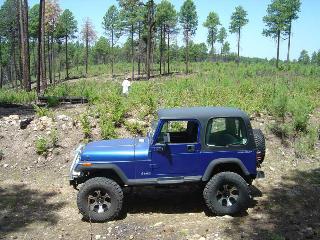
|
Permian
Marine Fossils
at
the
Fire
Break Road on the Rim
Permian
Kaibab Formation,
Fossil
Mountain (Gamma) member
|
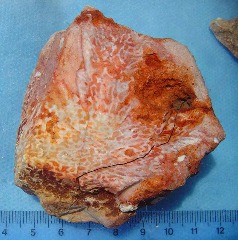
|
Updated 7/16/17
 |
The Fossil
Mountain member of the Permian Kaibab formation (285 million
years age) outcrops on the top of the Mogollon Rim (Southern
end of the Colorado Plateau) as you top out after a steep climb
on Highway 87 north of Payson. As is most of the Kaibab Limestone,
it is highly dolomitized and very hard and brittle. Fossils do
not survive well the process of dolomitization of limestone,
however the larger more robust brachs, mollusks and bryozoans
do fairly well. This locality is one of the first fossil sites
we ever located over 25 years ago, and we continue to return
to explore its riches. Its also a great place to go in the summer,
when its hot in Payson and broiling in the Valley.
This
trip which was on July 14th this year had great weather in the
morning, and the Monsoon did not rain until later that afternoon.
We came back with a nice batch of Productids, Brachs, Sponges,
Bryozoans, Stromotoporoids, trace fossils and raspberries! The
location of this site is no secret - Go north on Highway 87 and
about half a mile on the left before Highway 260 is the fire
break dirt road. Drive 1/4 mile to end and park. Fossils are
everywhere.
|
Images of the Site and Fossil in Situ:
Up on the Mogollon Rim, at 7200 feet elevation consisted mainly of Ponderosa Pines. There had been a large fire years before, and the
ground was mostly barren still.
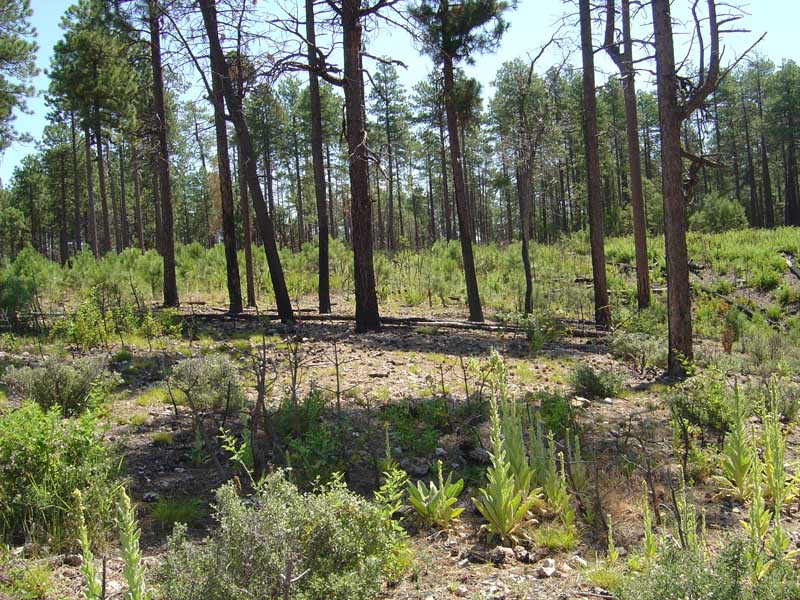 Dawn searches the slopes where the lithology suddenly changed from Productid to Urchin bearing layers:
Dawn searches the slopes where the lithology suddenly changed from Productid to Urchin bearing layers:
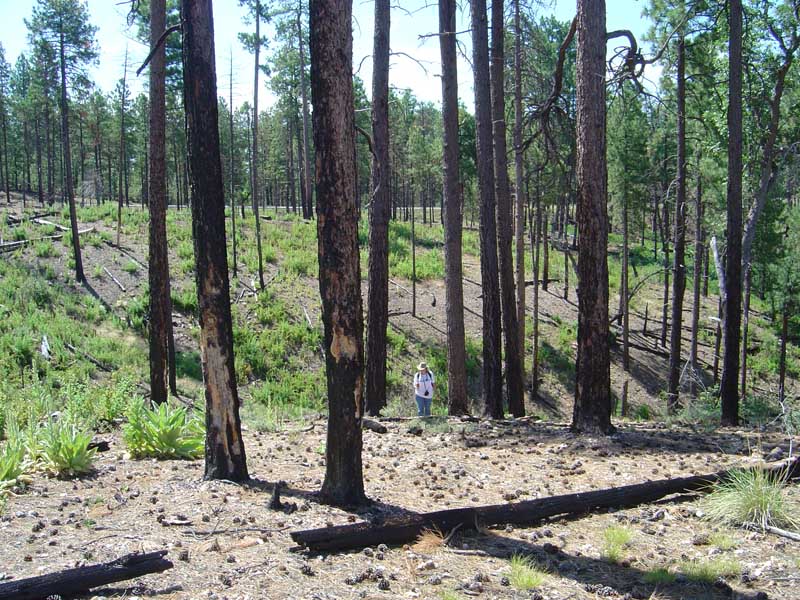 Dawn found that right next to where we parked was filled with wild raspberries. Harvest time!
Dawn found that right next to where we parked was filled with wild raspberries. Harvest time!
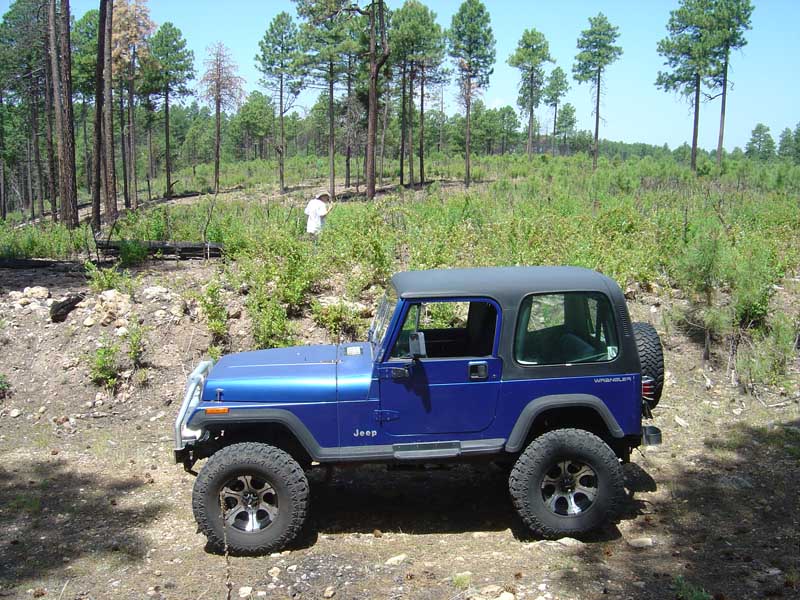 The ground is covered with cherts, and dolomite pieces. This magnesian limestone will not dissolve in acids.
The ground is covered with cherts, and dolomite pieces. This magnesian limestone will not dissolve in acids.
 The Author - waiting for Dawn to finish collecting raspberries...
While waiting, I wandered down the road and found the BEST urchin material of the day!
The Author - waiting for Dawn to finish collecting raspberries...
While waiting, I wandered down the road and found the BEST urchin material of the day!
 Trace fossils, Thallasinoides. (Shrimp Burrows)
Trace fossils, Thallasinoides. (Shrimp Burrows)
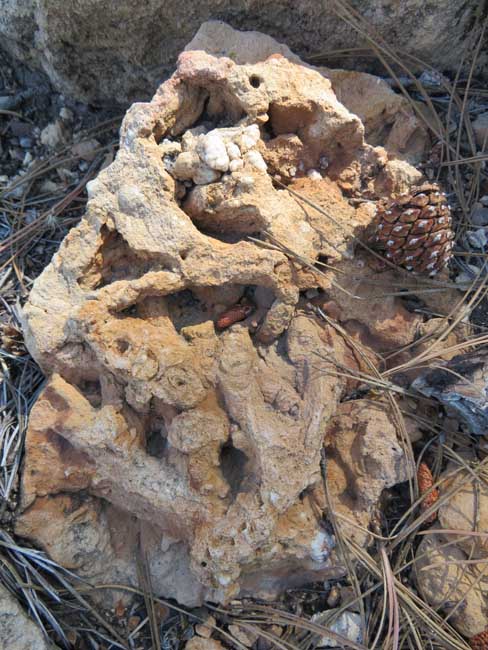 Productid in situ as found. Collecting this time of year up on the Rim is great - it was 75F out. Down in Phoenix at the same time it was 107F.
Productid in situ as found. Collecting this time of year up on the Rim is great - it was 75F out. Down in Phoenix at the same time it was 107F.
 Thallasinoides and Productus.
Thallasinoides and Productus.
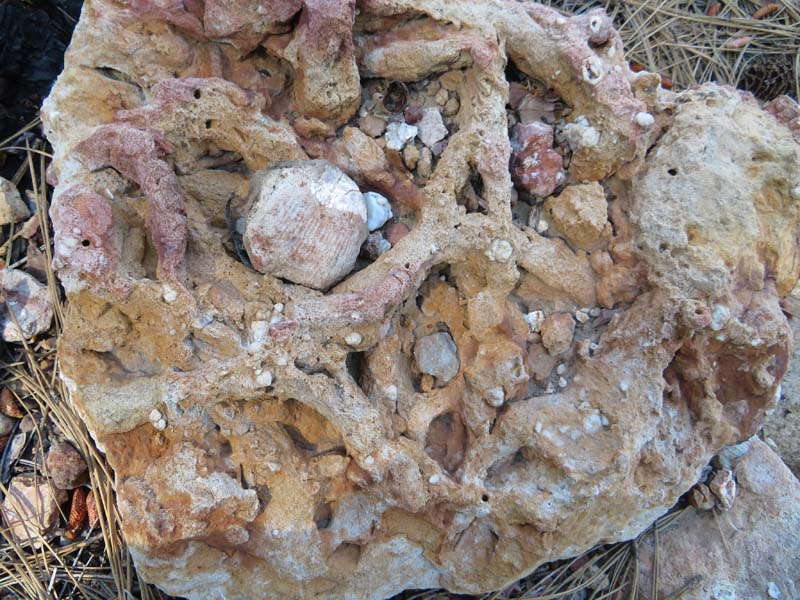 Monster trace fossils slab. The shrimp would have been roughly pencil sized in diameter.
Monster trace fossils slab. The shrimp would have been roughly pencil sized in diameter.
 Large blocks of Dolomites littered the ground.
Large blocks of Dolomites littered the ground.
 Here I am examining a fossil.
Here I am examining a fossil.
 Note: all fossil images scale is in centimeters.
Images of Fossils cleaned up
- Leucon Hexactanellid Glass Sponges (Actinocoelia Meandrina)
- Sponge images are photographed under water for best photographic appearance.
Note: all fossil images scale is in centimeters.
Images of Fossils cleaned up
- Leucon Hexactanellid Glass Sponges (Actinocoelia Meandrina)
- Sponge images are photographed under water for best photographic appearance.
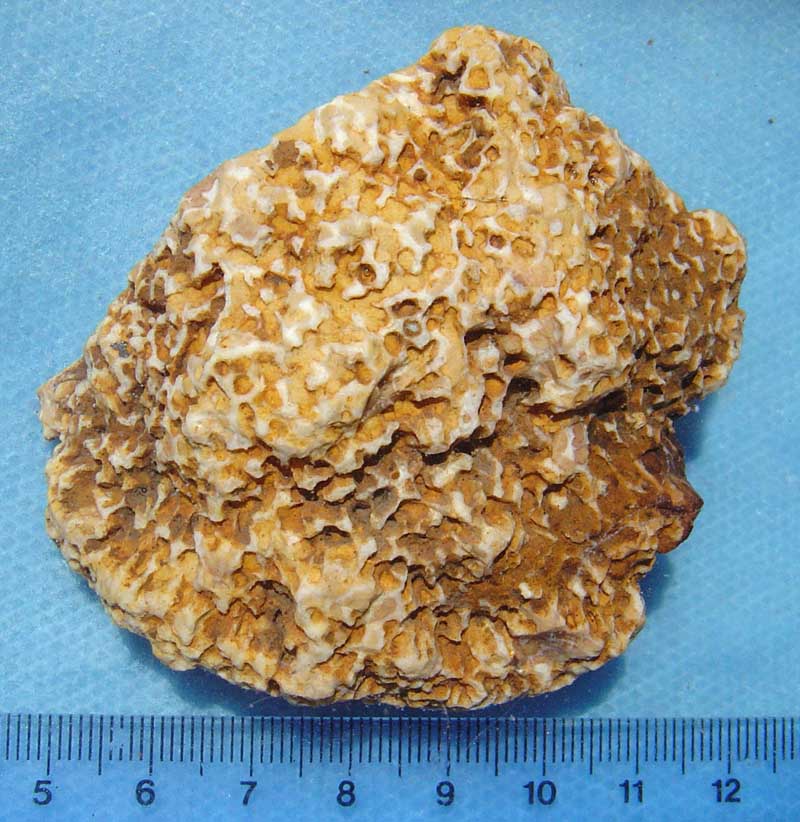

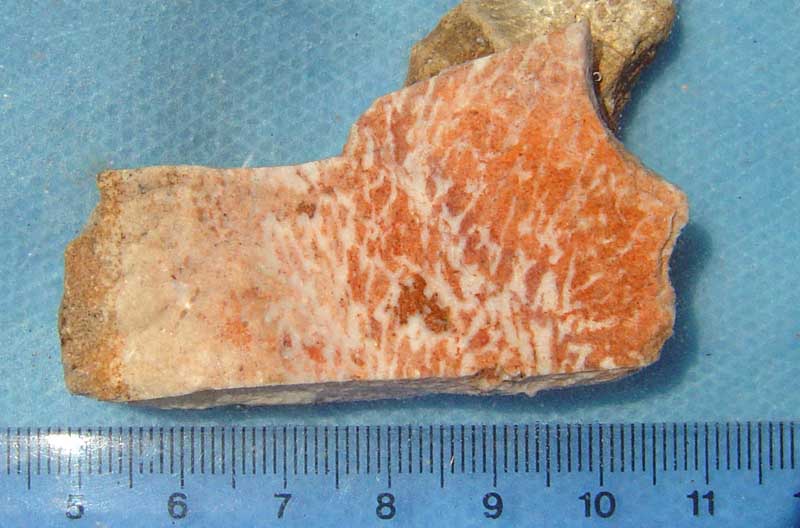 On this specimen, you can actually see the central hole (Atrium) which was the center of the tubular sponge.
On this specimen, you can actually see the central hole (Atrium) which was the center of the tubular sponge.

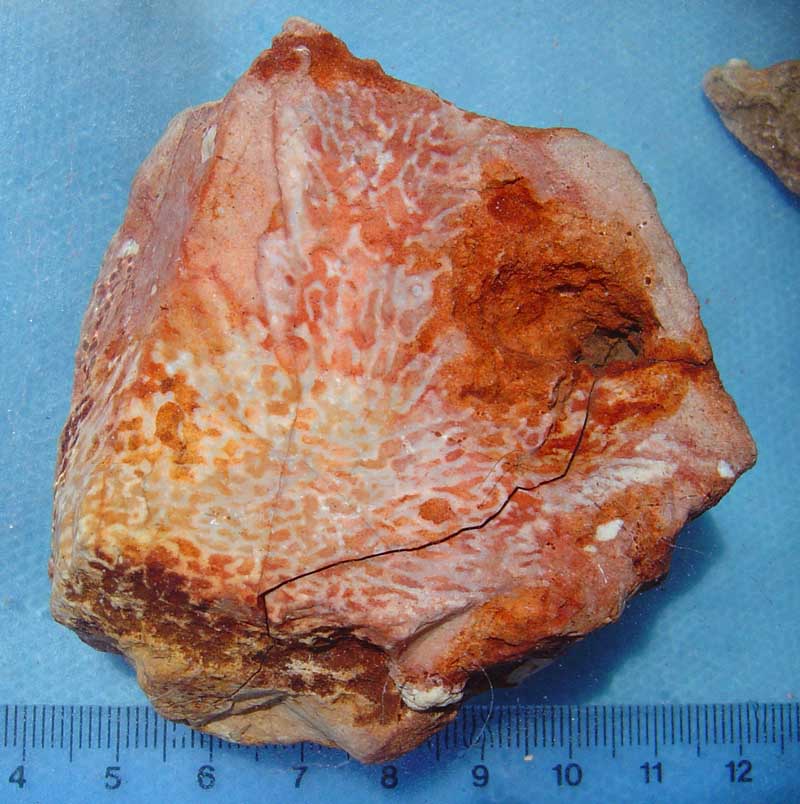 Large block of trace fossils (Thallasinoides - Callanassid Shrimp burrows) with embedded Productid:
Large block of trace fossils (Thallasinoides - Callanassid Shrimp burrows) with embedded Productid:
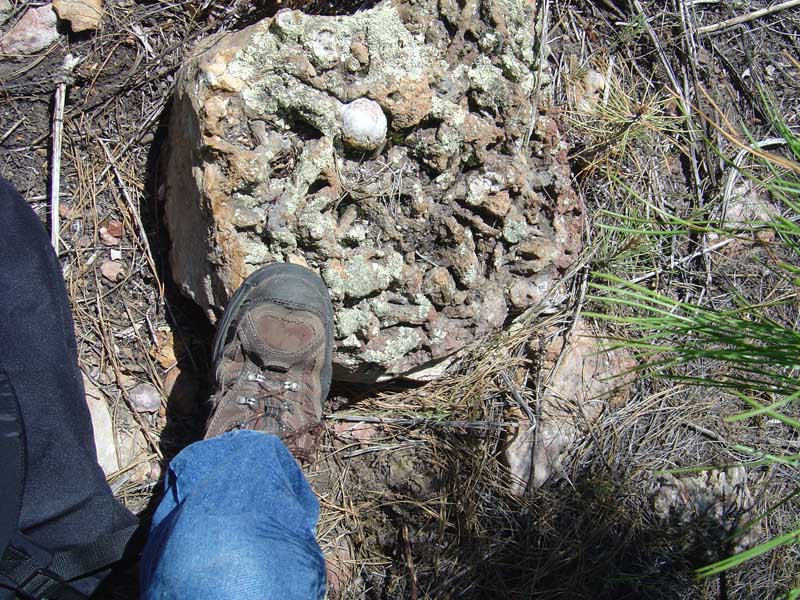 Rhynoconellid Brachiopod
Rhynoconellid Brachiopod
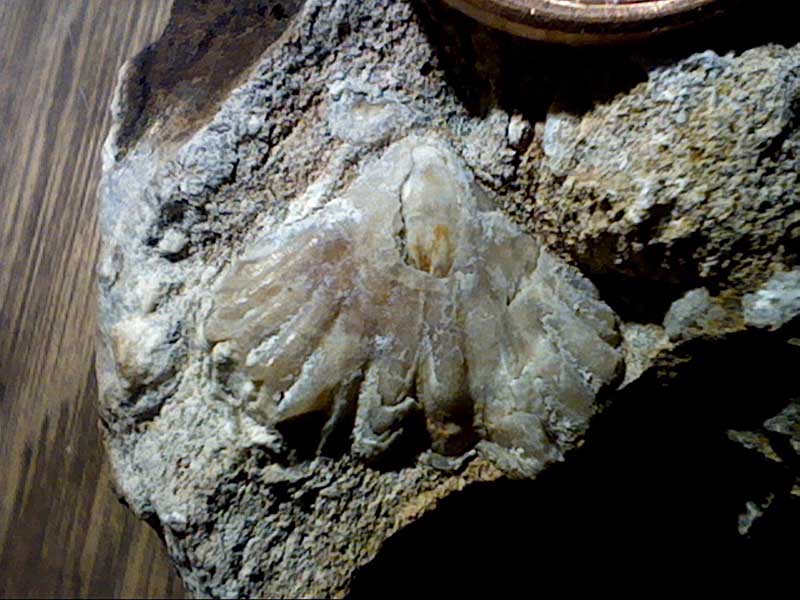 Second Rhynoconellid Brach:
Second Rhynoconellid Brach:
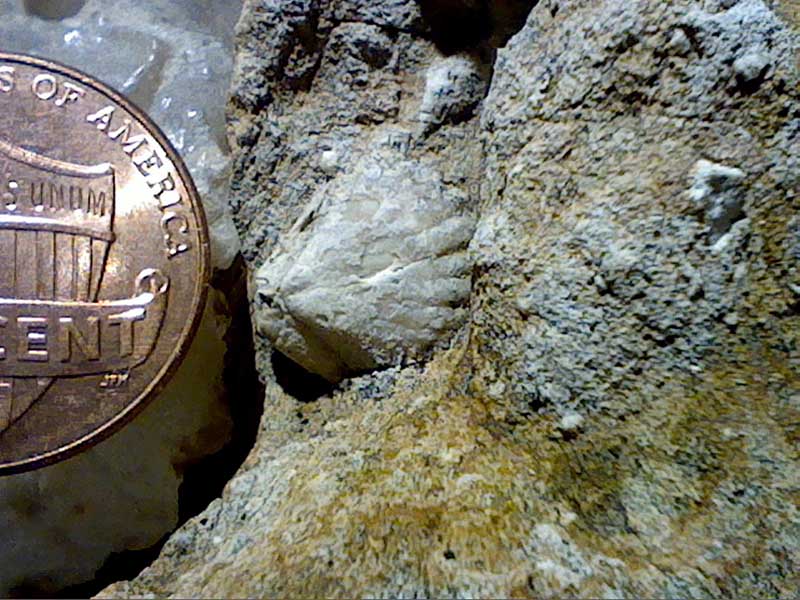 Many Productid Brachiopods (Productus sp.) were found at this site, but preservation varied considerably. They ranged in size from
an inch up ward to around 4 inches for the monster ones.
Many Productid Brachiopods (Productus sp.) were found at this site, but preservation varied considerably. They ranged in size from
an inch up ward to around 4 inches for the monster ones.
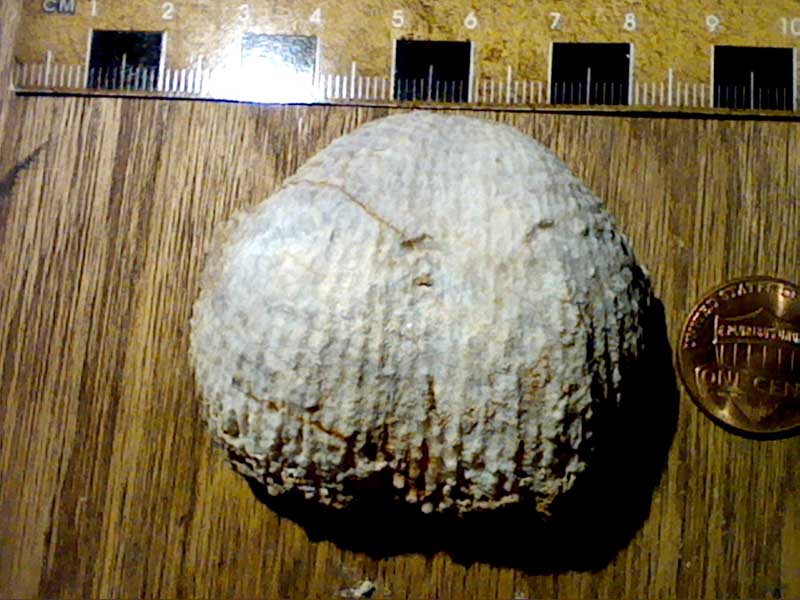
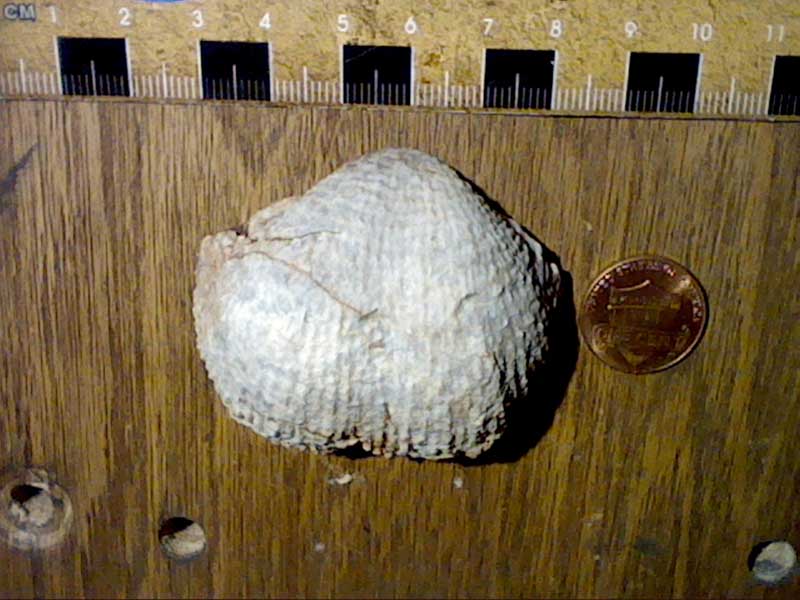 The most gigantic one Dawn found was base ball sized! She always finds the coolest fossils...
The most gigantic one Dawn found was base ball sized! She always finds the coolest fossils...
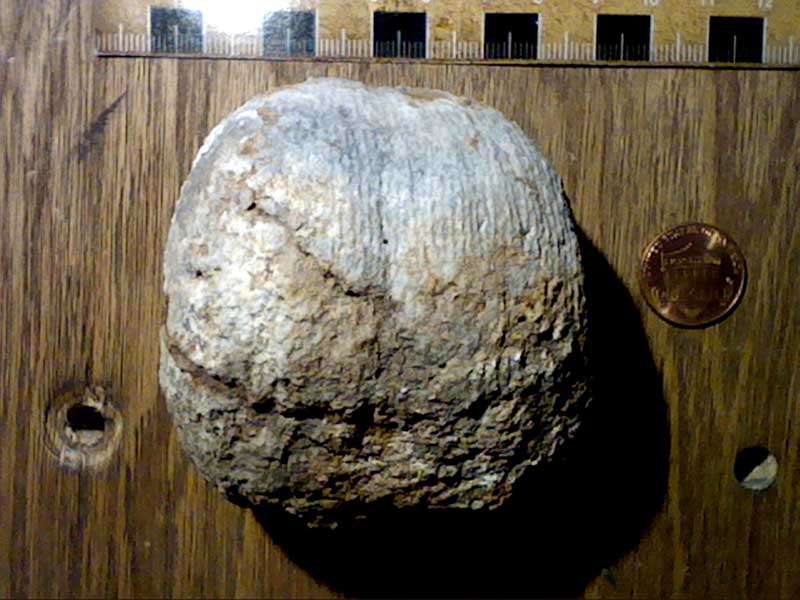 Side View same huge brach:
Side View same huge brach:
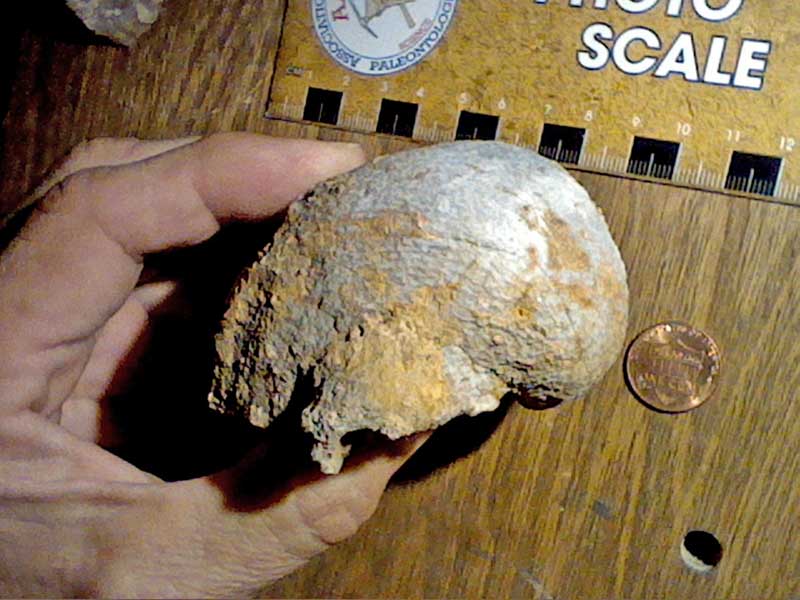 Large flat Aviculopectin like mollusk that is poorly preserved:
Large flat Aviculopectin like mollusk that is poorly preserved:
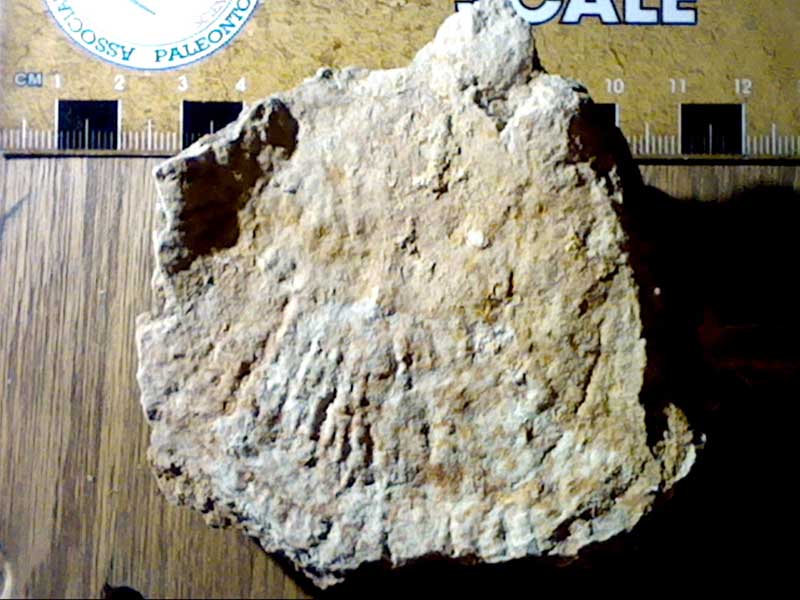 Meekella Brachiopod, large and poorly preserved. This was the only one we found:
Meekella Brachiopod, large and poorly preserved. This was the only one we found:
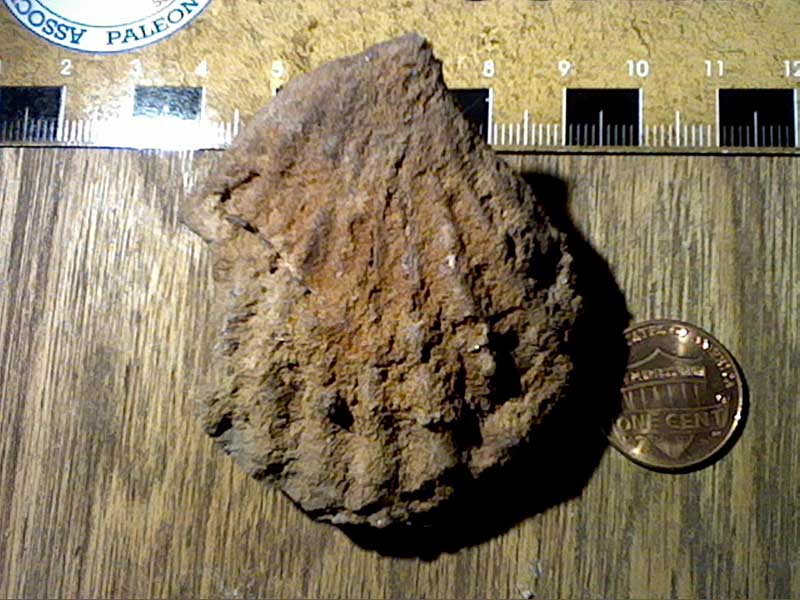 Umbo (hinge) end of Productus sp.
Umbo (hinge) end of Productus sp.
 Nearly 100% of all productids found had both valves intact. This is the bottom of the brach, which is very flat compared to the top:
Nearly 100% of all productids found had both valves intact. This is the bottom of the brach, which is very flat compared to the top:
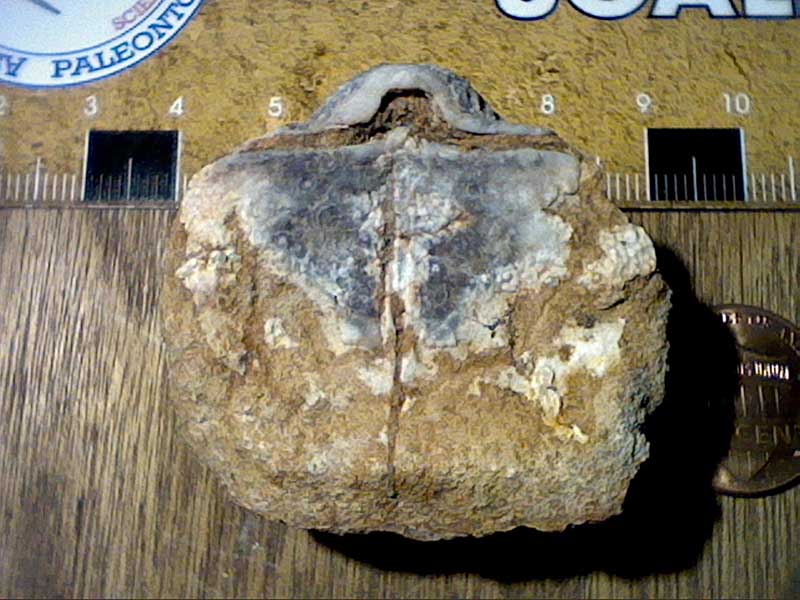 This was the first time I had ever found these productids with the flat valve missing! You can see the insides of the pedicle valve has muscle
attachments scars:
This was the first time I had ever found these productids with the flat valve missing! You can see the insides of the pedicle valve has muscle
attachments scars:
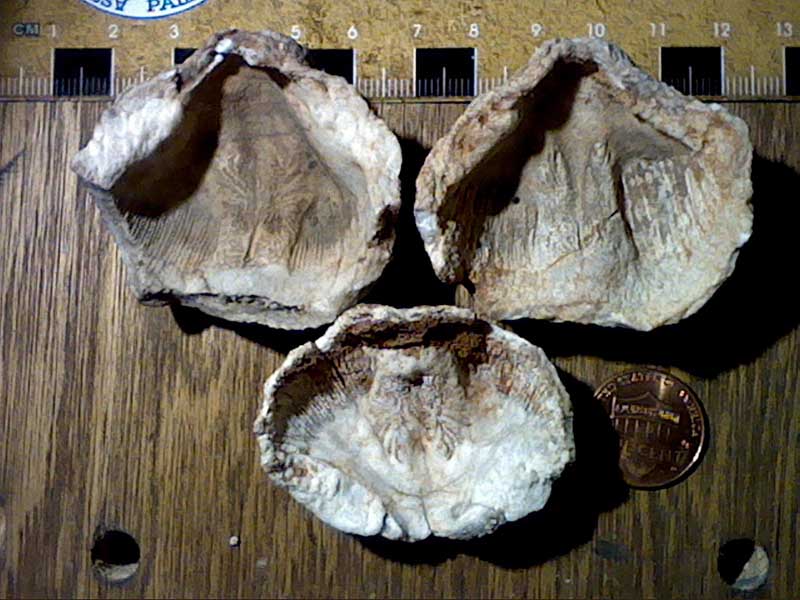 Close up of internal details:
Close up of internal details:
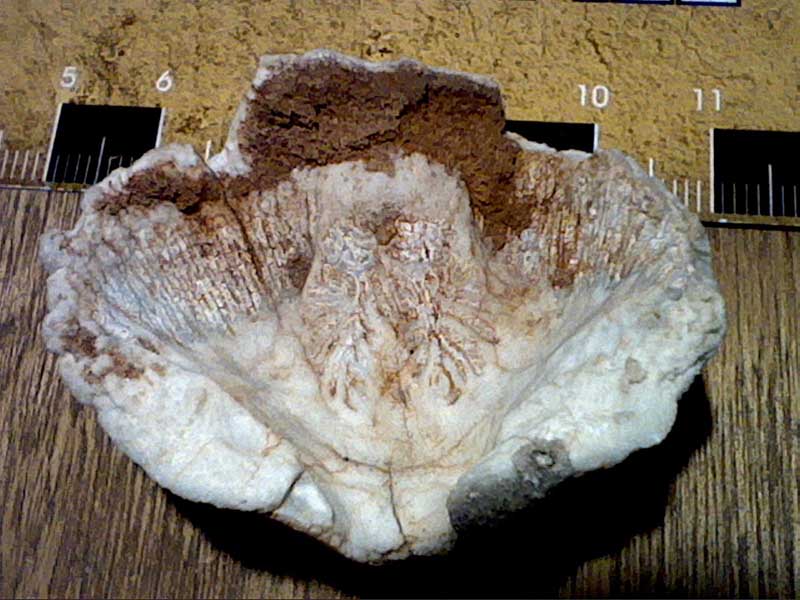 Found rarely in the Kaibab are Composita Brachs. They are much smaller, marble sized.
Found rarely in the Kaibab are Composita Brachs. They are much smaller, marble sized.
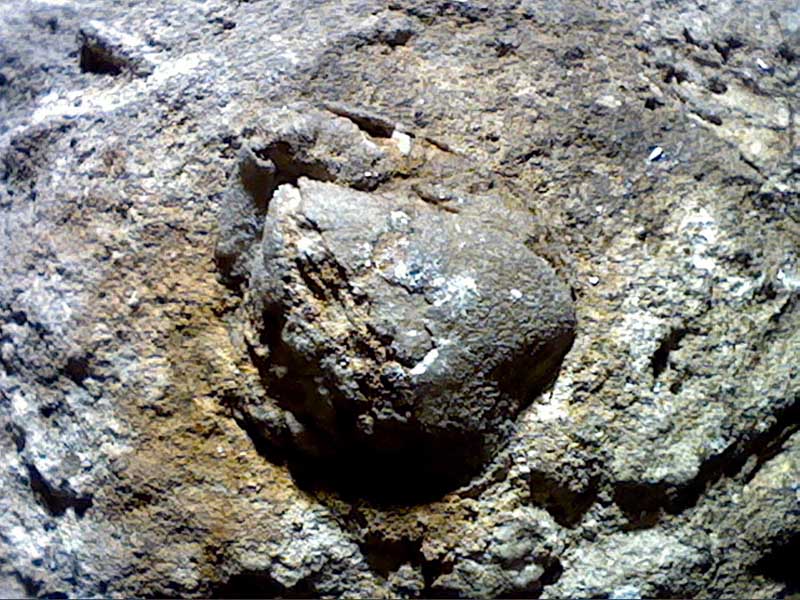 Urchin Material Found at Site:
Here is one of the two types of spines found, the tuberculated spines here:
Urchin Material Found at Site:
Here is one of the two types of spines found, the tuberculated spines here:
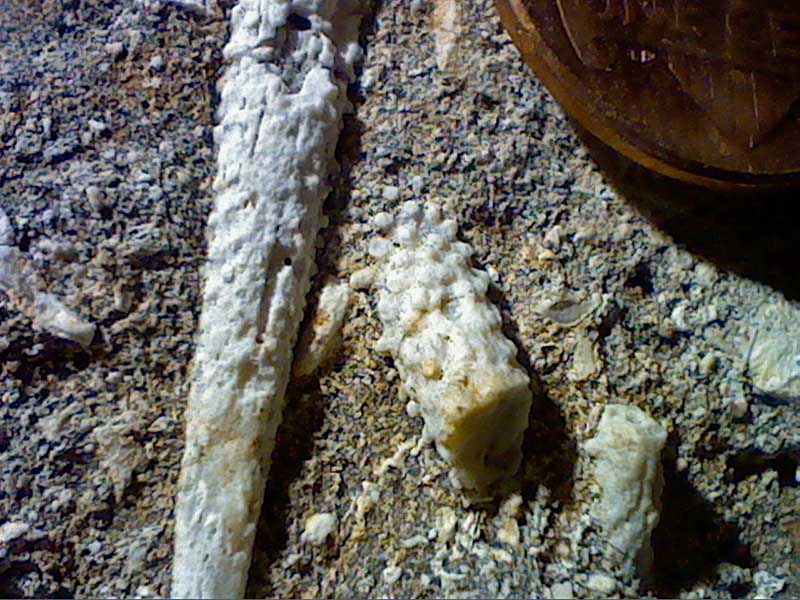
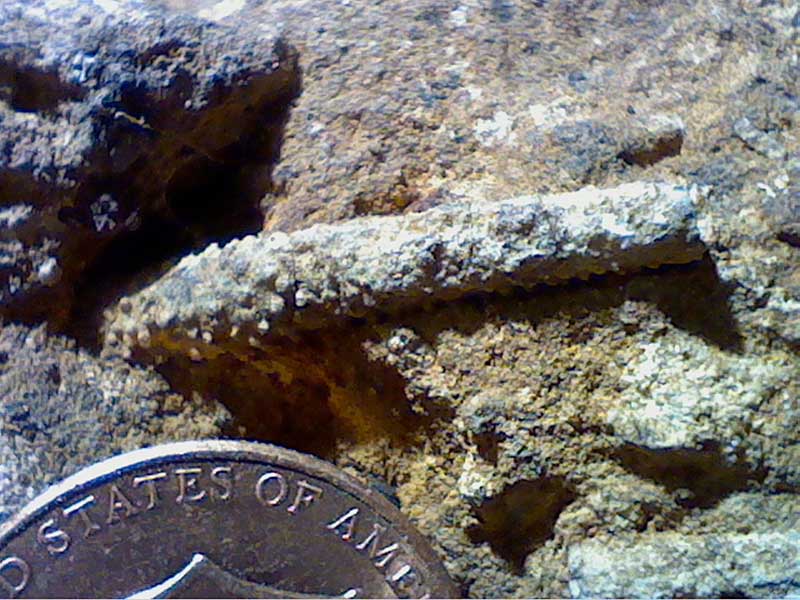 The other type of spine found was ribbed on its exterior and were easily degraded by the taphonomy of preservation:
The other type of spine found was ribbed on its exterior and were easily degraded by the taphonomy of preservation:
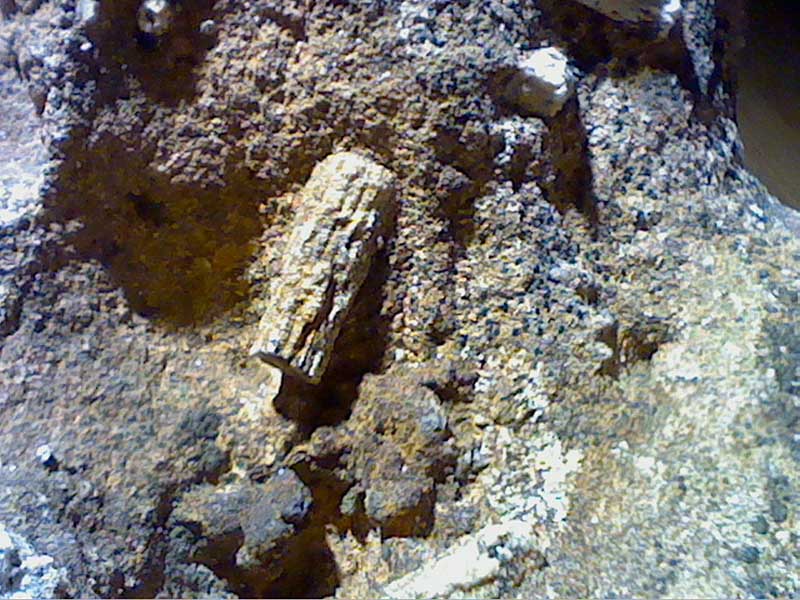
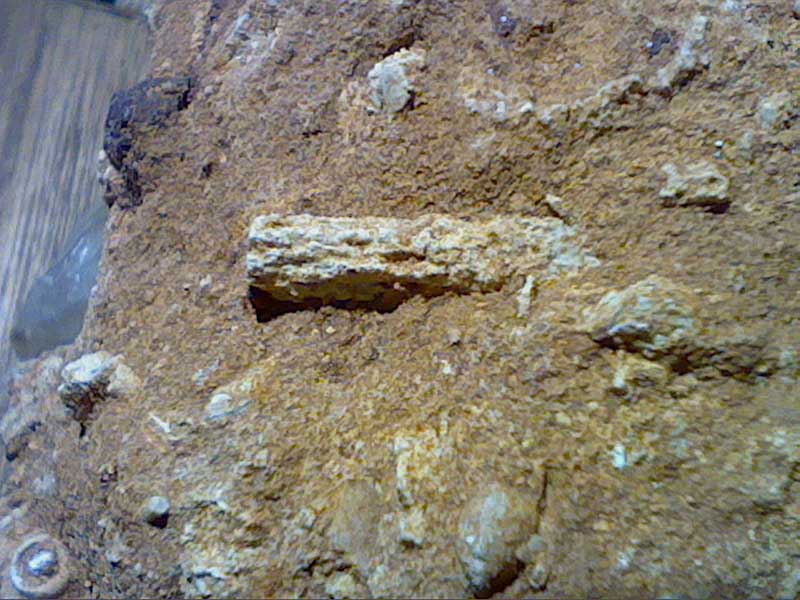 Attachment base for ribbed spine:
Attachment base for ribbed spine:
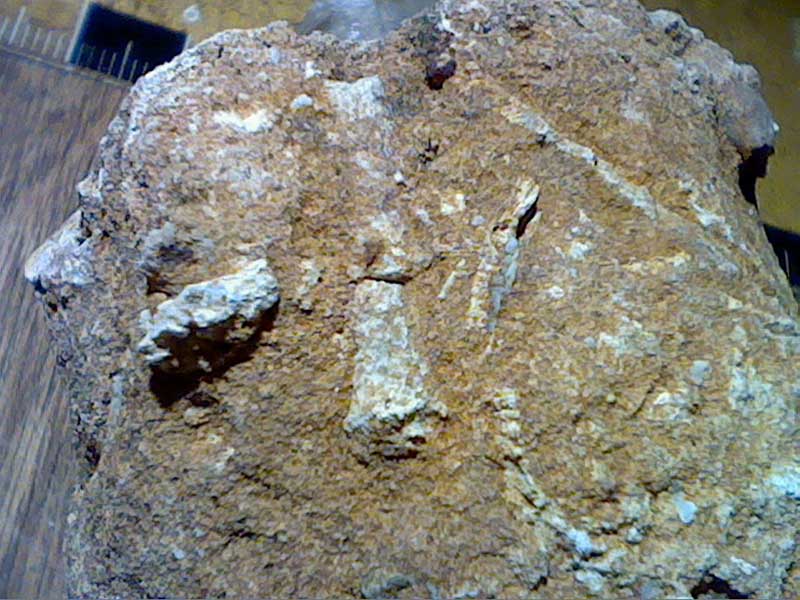
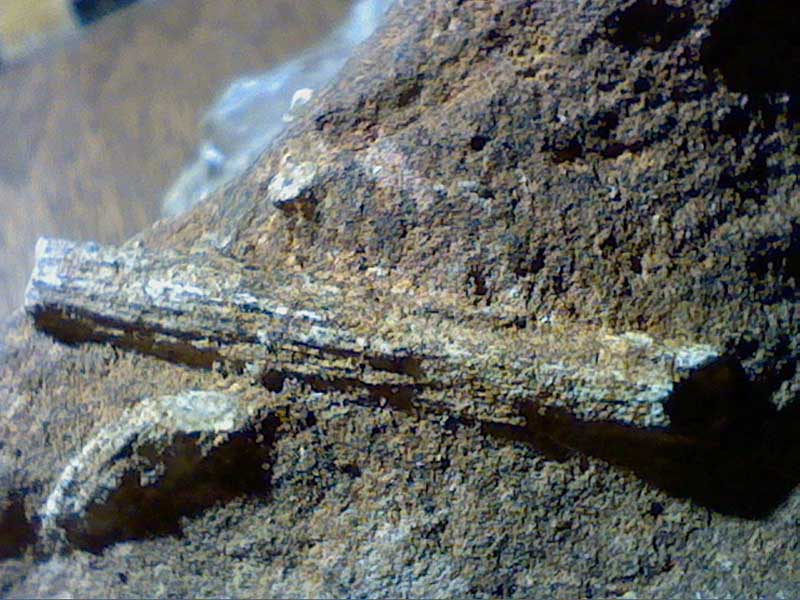 Attachment base plate from the Urchin:
Attachment base plate from the Urchin:
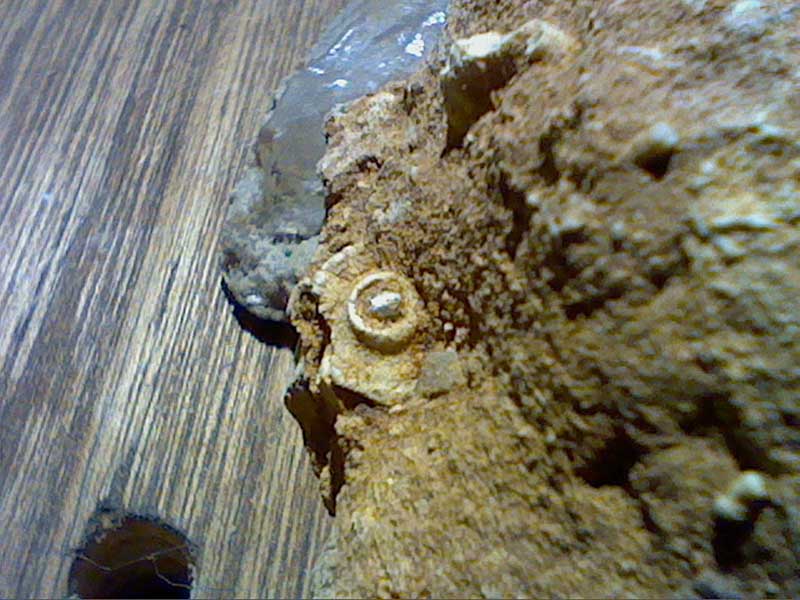 Bryozoans and small urchin hash on a select few pieces.
-Most of what is preserved at this site had to be pretty robust:
Bryozoans and small urchin hash on a select few pieces.
-Most of what is preserved at this site had to be pretty robust:
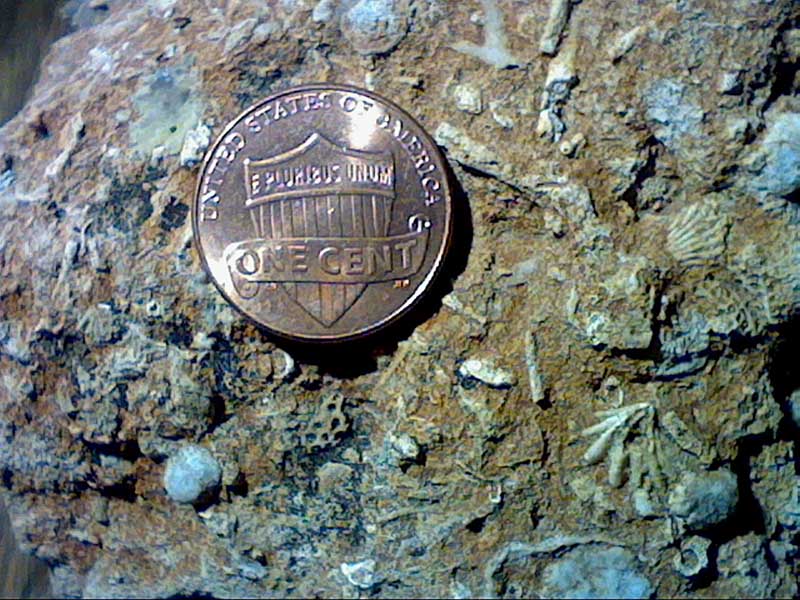
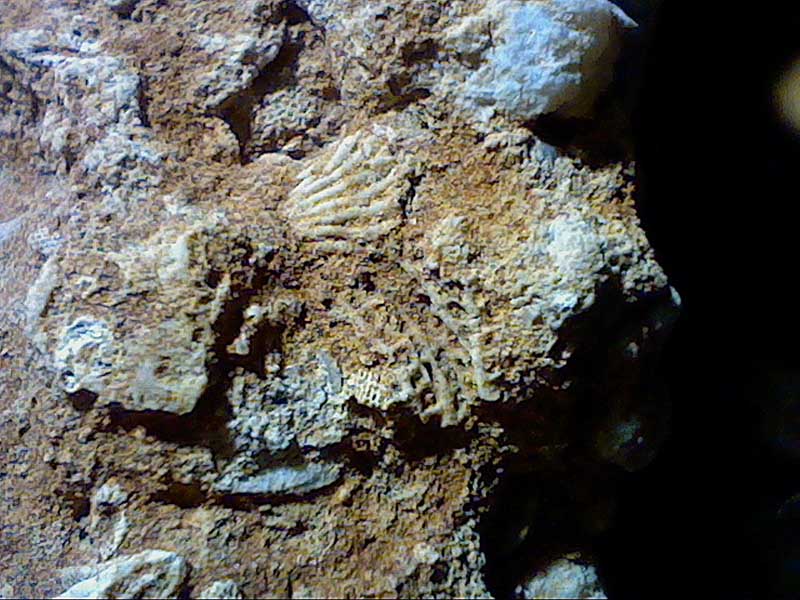
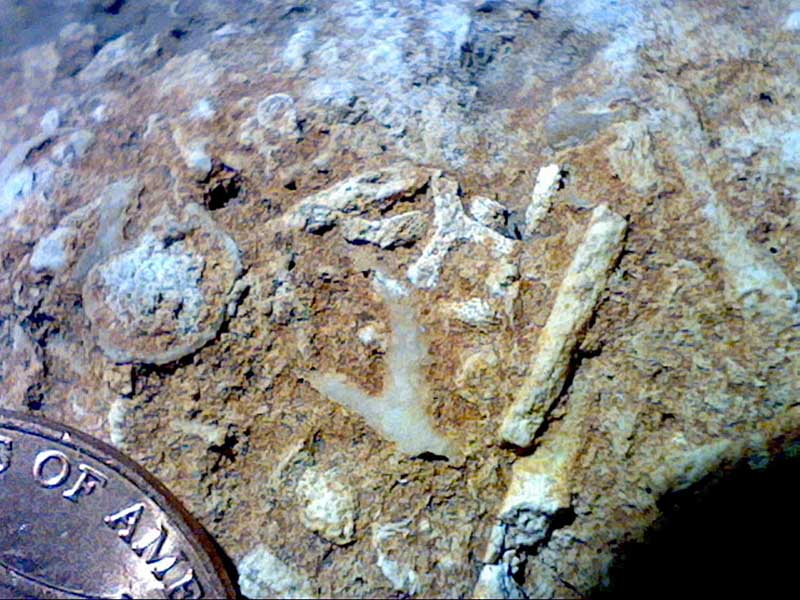 Here is a Thallasinoides burrow section, with side branches. Many of the loose burrows were filled with urchin fossils!
Here is a Thallasinoides burrow section, with side branches. Many of the loose burrows were filled with urchin fossils!
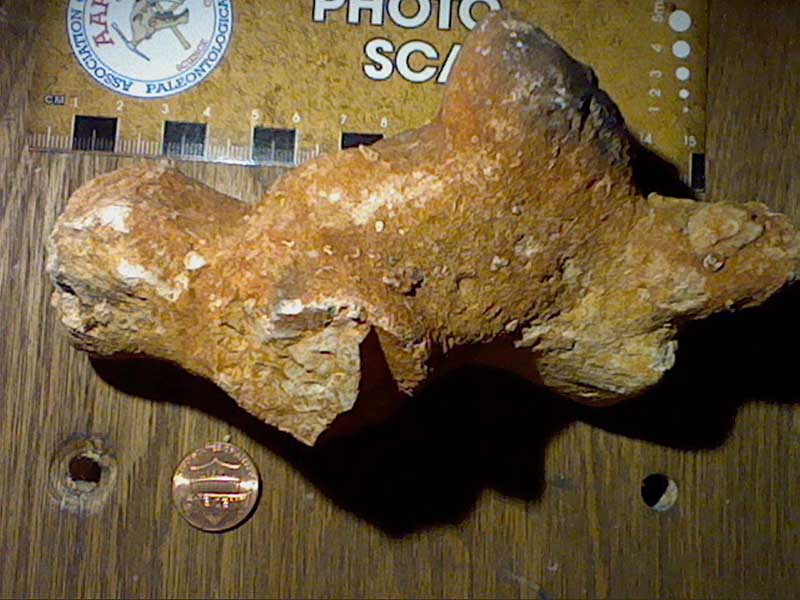 Stromotoporoids (A type of flat sponge)
- plentiful in the dolomites, and here is a cross section, about 1/4" thick showing internal pillar details:
Stromotoporoids (A type of flat sponge)
- plentiful in the dolomites, and here is a cross section, about 1/4" thick showing internal pillar details:
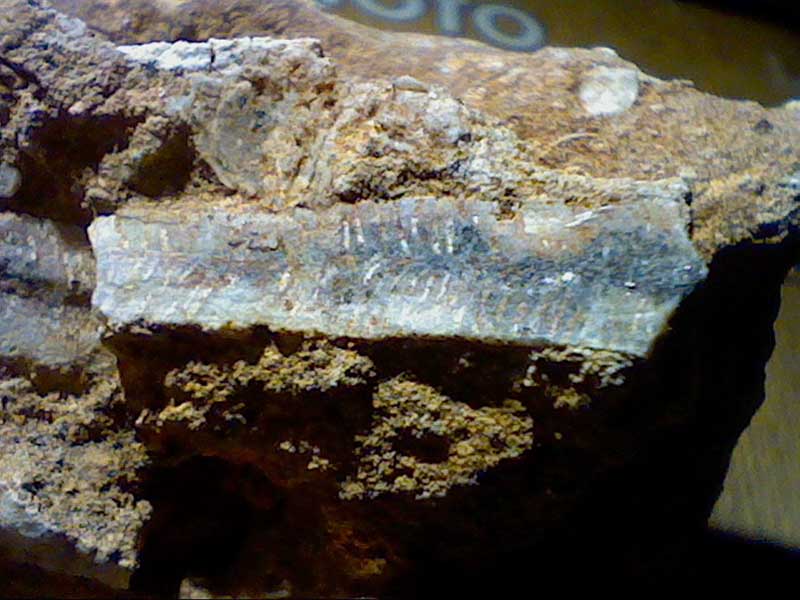
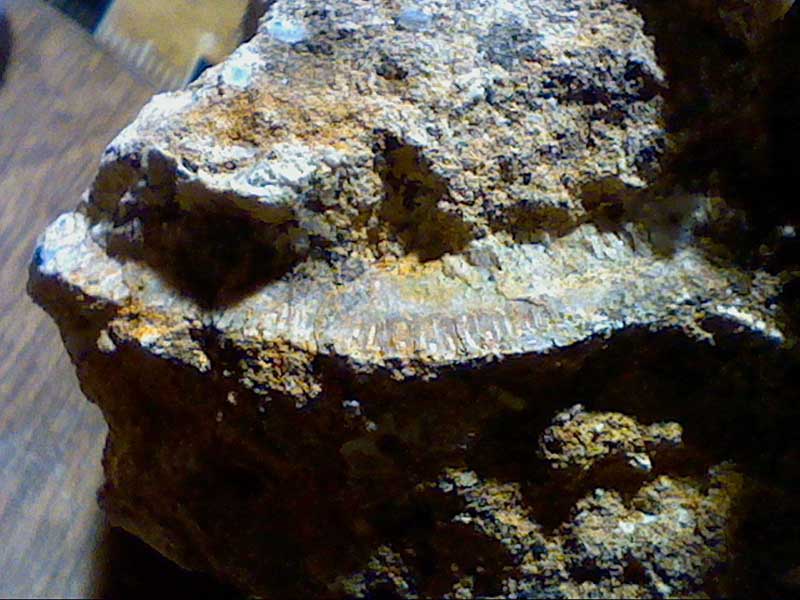 This piece about 5 inches in size contains numerous Stromotoporoids and urchin spines.
This piece about 5 inches in size contains numerous Stromotoporoids and urchin spines.
 Microscope close ups of Fossils - 10x.
- Strom close up showing internal details. These sponges were flat like cardboard, and had a space in between the outer walls
that was hollow.
Microscope close ups of Fossils - 10x.
- Strom close up showing internal details. These sponges were flat like cardboard, and had a space in between the outer walls
that was hollow.
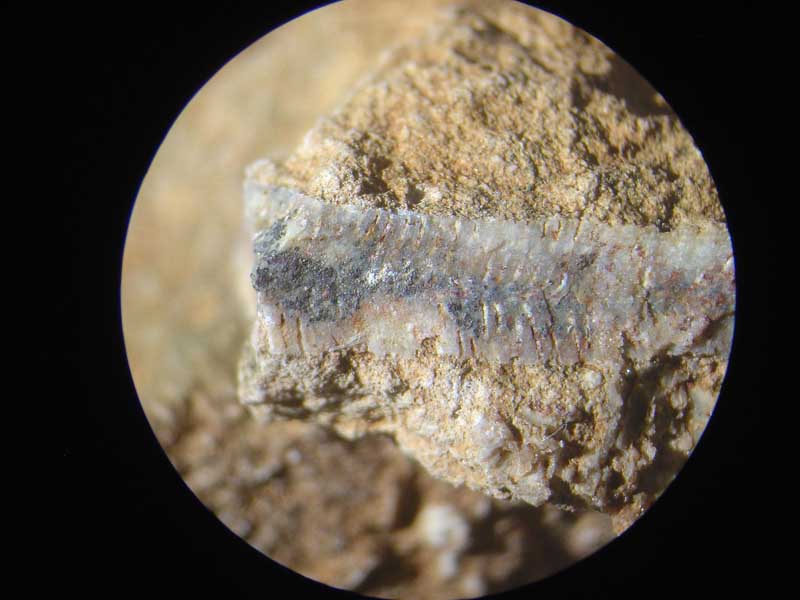 Rhynoconellid and some bryozoans:
Rhynoconellid and some bryozoans:
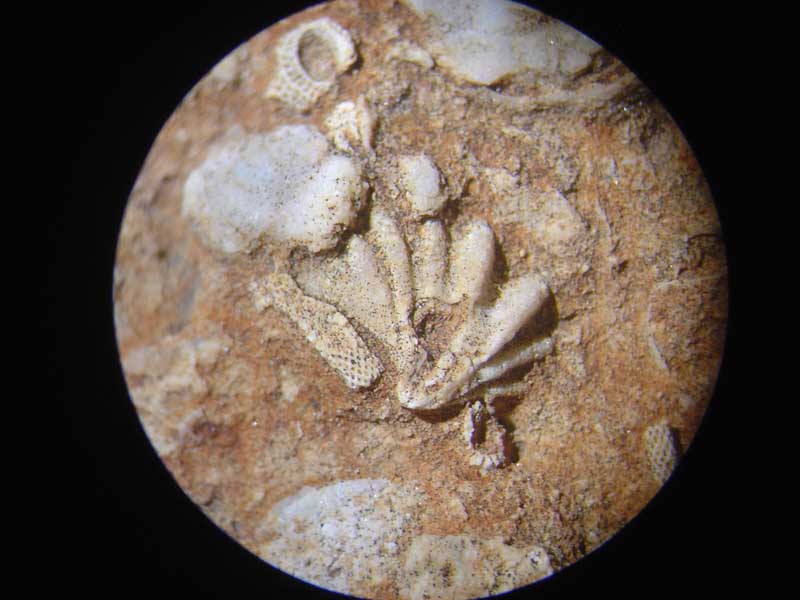 More bryozoans:
More bryozoans:
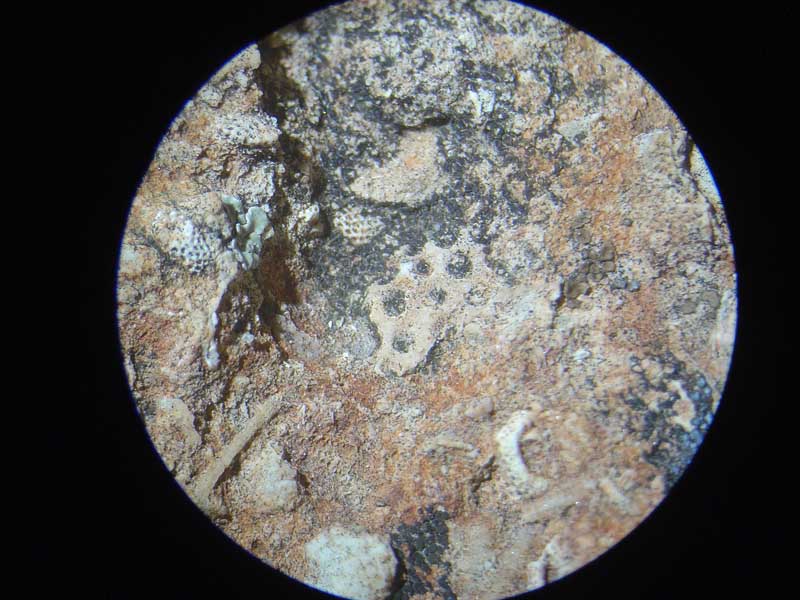
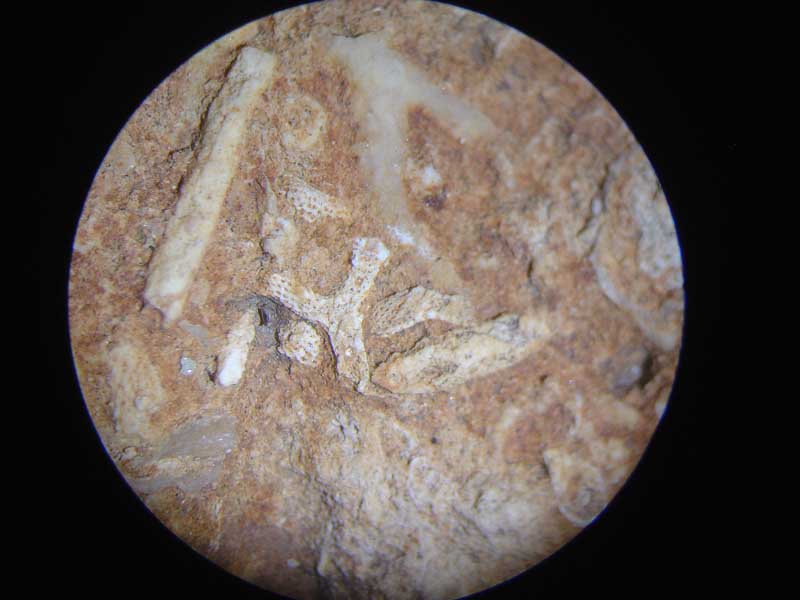 After washing and scrubbing with nylon brushes to remove dirt and moss, they are laid out to dry:
After washing and scrubbing with nylon brushes to remove dirt and moss, they are laid out to dry:
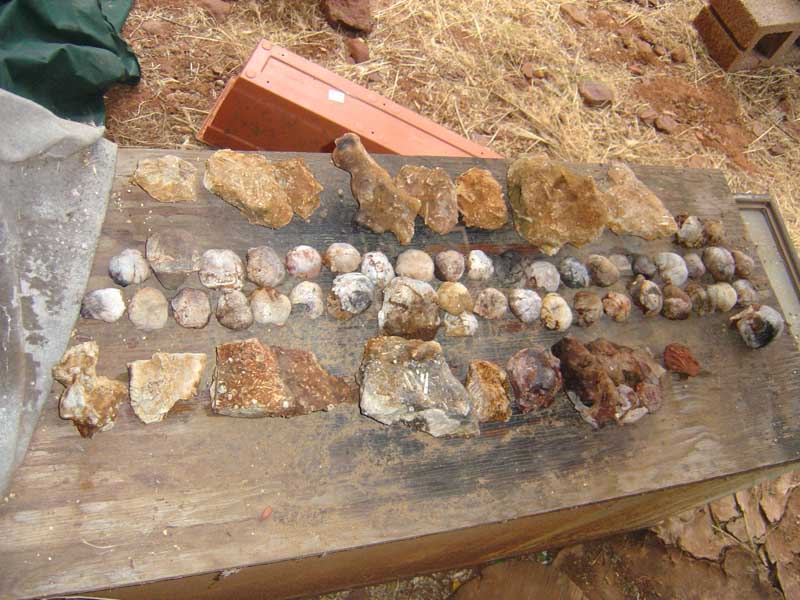
|
 Paleo HOME
Paleo HOME
|